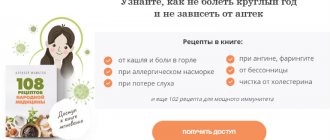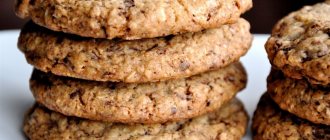A child’s stomach hurts for various reasons; they are identified by a pediatrician, an infectious disease specialist, or a gastroenterologist. Conduct laboratory and instrumental examination methods to determine the diagnosis. Not all drugs are suitable for young children.
How long have you had this pain syndrome?
- Several days (26%, 1,057)
- First day (21%, 865 Votes)
- Several months (13%, 514)
- Week (10%, 414)
- Several weeks (9%, 384)
- About a month (8%, 344)
- Chronic form (6%, 256)
- About a year (6%, 227)
Total voters: 4 062
Loading …
Consult a doctor!
The site provides reference information . Adequate diagnosis and treatment of the disease is possible under the supervision of a conscientious doctor . Any medications have contraindications. Consultation with a specialist and detailed study of the instructions is necessary! Be sure to make an appointment with your doctor .
Causes of stomach pain in a child
Painful sensations appear in children with the development of the following diseases:
- gastritis – inflammation of the stomach due to frequent stress, poor diet, and the influence of pathogenic bacteria;
- appendicitis - an acute inflammatory process of the cecum of the intestine with a risk of rupture and transfer of contents into the abdominal cavity, which leads to peritonitis, threatening life and health;
- reflux esophagitis - congenital or acquired deformation of the esophageal sphincter, leading to the reverse reflux of food gruel;
- colitis – damage to the mucous membrane of the colon;
- acute intestinal infection with severe nausea, diarrhea, fever, vomiting;
- increased acidity of gastric juice, which damages the organ from the inside;
- heartburn is the passage of gastric juice into the esophagus with damage to its walls.
The condition often occurs when parents give medications to their child without a doctor's permission. For example, antibiotics. Not every drug in this group is approved for use in children.
For example, Azithromycin often affects the walls of the digestive tract, leading to dysbiosis without the use of probiotics.
Another factor that causes a painful condition is eating heavy food. Large amounts of fatty, spicy, overly salted, smoked and fried foods are prohibited.
There is a feeling of heaviness, impaired stool formation (diarrhea, constipation), and other symptoms of dyspeptic disorders. The pain may be located just under the breastbone or in the central abdominal area.
Children often swallow foreign objects. For example, buttons, coins. Unbearable, acute pain appears.
It intensifies with active movements and physical activity. They need to be quickly removed surgically, otherwise the mucous membrane will be damaged and bleeding will occur.
Types of abdominal pain
The abdominal region is the front surface of the body - from the lower border of the chest to the waist of the lower extremities. It covers the abdominal cavity, in which the organs of the digestive and genitourinary systems, large nerve plexuses and blood vessels are located. Disturbances in their work provoke discomfort and pain in the abdomen, which is classified:
- by area of distribution - extensive (diffuse) and local;
- by nature - dull, sharp, pressing, constant and spasmodic (cramping);
- According to the dynamics, it can be increasing and decreasing.
If the baby behaves very restlessly, the cause is most likely colic-like pain
You can determine the nature of the sensations of a baby who is not yet talking by his behavior. If he is capricious, refuses to eat and cannot sleep, the pain is probably dull. When the crying periodically intensifies to the point of screaming, the baby tenses and pulls his legs towards his stomach - perhaps spasms are bothering him.
Table 1. Localization of pain can tell a lot about its causes
| In which area of the abdomen? | What could it mean |
| Hypochondrium on the right. The pain is cutting, cramping, bursting, intensifies after fatty foods. | Liver pathologies (hepatitis, cirrhosis). |
| The same, with irradiation to the center of the abdomen. In the chronic form - dull, aching, associated with food intake. In acute cases – spasmodic. | Gastritis, dysbacteriosis. |
| Hypochondrium on the left. Cutting, aching pain. | Spleen dysfunction. |
| Around the navel. With gastroduodenitis, for example, there is bursting, aching pain, and in the acute period - spasmodic pain. | Gastroduodenitis, helminthic infestations, viral and bacterial gastrointestinal pathologies, digestive disorders, appendicitis (the beginning of an acute process). |
| Epigastric region. The pain is cramping, severe, with a frequent urge to defecate. | Stomach pathologies, viral intestinal lesions |
| Around the body (girdling). Burning, burning, especially after eating. | Acute pancreatitis. |
| Underbelly. Burning, cutting pain in the pubic area. | Cystitis. |
| Ileum, left-down. Acute pain. | Colitis, kidney pathologies. |
| Ileum, right-down. The pain is constant, moderate. | Appendicitis. |
How to distinguish dangerous conditions from indigestion, and when medical attention is required immediately, will be discussed a little later, but for now it’s worth figuring out why a child’s stomach may hurt.
What can you give your baby for stomach pain?
Not all medicines are suitable for children. You need to consult a doctor who prescribes traditional and traditional methods of therapy to solve the problem. They are followed strictly, observing the dosage.
The following tools and techniques are used:
- induce vomiting to eliminate swallowed food and foreign objects;
- sorbent substances (Enterosgel, Polysorb) – applicable from birth, aimed at binding foreign substances and removing them from the digestive tract before absorption into the blood;
- antacids (Almagel, Maalox) - a syrup is prescribed that suppresses the increased acidity of gastric juice;
- antibiotics after bacteriological culture, use syrups, capsules, the dosage of which is selected depending on body weight and the type of pathogenic microorganism found;
- antiseptics (Enterofuril) - destroy pathogenic bacteria, but act gently;
- gastroprotectors (De-nol, Smecta) – form a protective film, but are not absorbed into the bloodstream, therefore they act locally;
- rehydration preparations dissolved in water (Regidron) - intended to help with dehydration, which may be accompanied by neurological disorders;
- a decoction of chamomile, string, calendula to eliminate digestive problems.
Adjuvant medications may be required. The antipyretic drug Nurofen is prescribed, which simultaneously causes an analgesic effect. The child needs to be given at least 1 liter of water per day to remove toxins and avoid dehydration.
Why does a 10 year old child have a stomach ache?
There are many reasons for the development of abdominal pain. This includes the presence of digestive diseases - gastritis, colitis, duodenitis, cholecystitis and pancreatitis. They arise as a result of irrational, unhealthy nutrition, as a result of prolonged irritation of the mucous membranes, uneven secretion of digestive juices. Such diseases usually manifest themselves in the fact that a 10-year-old child often has a stomach ache, and stool disturbances occur - constipation or diarrhea, nausea, appetite disturbances. Children lose weight, their general condition suffers, and the pain can range from minor to severe, long-lasting and even night-time.
Other causes of abdominal pain can be intestinal infections or food poisoning. With them, the pain occurs suddenly, it is sharp, unbearable, bloating, diarrhea and severe cramps occur. Fever, nausea, vomiting also occur, and there may be a decrease in blood pressure and even loss of consciousness.
If you have abdominal pain, nausea and vomiting that lasts more than 6-12 hours, you need to call an ambulance; this condition is dangerous due to dehydration and toxicosis, which threatens the child’s life.
If pain occurs in the lower abdomen in a 10-year-old boy, this may indicate the presence of pathologies of the kidneys, bladder or rectum. In girls, in addition, such complaints may also indicate the beginning of menstruation.
What does dull, pulling, pinpoint or cutting pain in the stomach indicate?
Dull pain syndrome indicates the following conditions:
- slight spasms of the muscle wall;
- hunger due to lack of contents in the stomach;
- gastritis – inflammation of the mucous membrane of the gastric wall;
- peptic ulcer – deep tissue ulceration due to the proliferation of the bacterium Helicobacter pylori;
- development and reproduction of other bacteria, viruses;
- damage to surface layers under the action of mechanical, physical, chemical, toxic factors;
- allergic reaction, individual intolerance to foods, medications, and other components that penetrate the digestive tract;
- food poisoning, chemicals;
- frequent stress, nervous tension, nervousness;
- benign neoplasms, leading to pain due to proliferation and compression of surrounding tissues;
- flatulence with the formation of gas bubbles that pass through the tract, causing irritation of the walls;
- cancer is a malignant neoplasm that grows and causes metastases in neighboring organs when atypical cells penetrate the systemic bloodstream.
Reasons for the formation of nagging uncomfortable sensations:
- minor injuries without bleeding;
- excessive consumption of alcoholic beverages;
- unhealthy diet with consumption of fatty, spicy, fried, smoked, salty foods;
- long-term drug therapy with nonsteroidal anti-inflammatory drugs that cause damage to the epithelial surface;
- the initial phase of gastritis development.
Point pain syndrome is formed under the influence of the following factors:
- focal damage to different parts of the stomach, pain appears in the area of their localization;
- the initial formation of an injury that extends only to one part of the organ.
Cases of cutting sensations:
- perforation of an ulcer with the formation of bleeding into the abdominal cavity;
- wall rupture due to excessive growth of the tumor;
- exacerbation of gastritis, gastrointestinal tract;
- acute intestinal infection;
- dysfunction of the gastric region;
- heartburn when stomach contents backflow into the esophagus (can develop with a single reflux or gastroesophageal reflux disease).
All types of negative sensations are formed in the stomach not only with its disease, but also with pathologies of neighboring organs. For example, the pancreas, small or large intestine, cardiovascular system.
Spasms of any abdominal organs may occur. Often stomach pain is confused with appendicitis. It is necessary to promptly determine the root cause using diagnostic tests.
Determining the nature of the pain
In any case, before drawing conclusions regarding the causes of pain and suspecting a child of unwillingness to attend school, you need to understand the situation. First you need to ask him where it hurts the most and how severe the pain is.
On a note! If a child really has a stomach ache, he usually cannot lie straight and takes uncomfortable positions, more often the fetal position. When trying to get out of bed, he cannot get up quickly.
With abdominal pain, the child takes uncomfortable positions
When do you need to see a doctor urgently, and which doctor will help?
If the pathology is mild or moderate, you can cope at home yourself. In case of prolonged absence of treatment or the development of serious diseases, a doctor will help.
Cases to contact:
- constant feeling of dyspeptic disorders - nausea, vomiting, impaired stool formation (diarrhea, constipation), heartburn, abdominal pain, increased gas formation;
- change in tongue color - yellow, white, gray, black, brown coating;
- a specific odor from the mouth that does not belong to the normal variant - rotten, acetone, egg;
- acute pain attack that occurs suddenly, without an obvious reason;
- ingestion of a foreign object of any size and shape;
- blood in stool or vomit;
- mucus, pus in feces;
- chronic pain for unknown reasons;
- acute pain that is not relieved by analgesics;
- deterioration of health, accompanied by elevated body temperature, especially to critical limits;
- loss of consciousness, sudden drop in blood pressure;
- severe poisoning with manifestations of intoxication of the body, especially from the liver and kidneys.
Doctors to contact when negative clinical signs appear:
- gastroenterologist – pathologies localized in the digestive tract;
- infectious disease specialist – development of infection of any origin;
- neurologist – damage to nerve endings, fibers of the peripheral or central nervous system;
- surgeon – detection of conditions requiring surgery or procedure;
- endocrinologist – diseases of the endocrine glands;
- psychologist, psychotherapist – eliminating frequent worries, worries, and other stress;
- therapist - the development of painful symptoms that cannot be identified during a general examination (after the examination, he sends the patient to other doctors, depending on the data obtained).
The selected doctor prescribes additional tests to help identify the diagnosis. Treatment begins immediately so that the disease does not progress.
Why does my stomach hurt?
Before trying to determine the cause of pain, it is necessary to find out how intense it is and where it is localized.
In case of severe pain, babies, as a rule, prefer to lie down, taking not very comfortable positions. They turn and stand up, while the children are very careful, slowly. The symptom can be sharp (dagger pain), dull aching or stabbing. To determine the cause of pain, it is important to track where its epicenter is located. So, the left side of the peritoneum may indicate intestinal obstruction/inflammation. In addition, the pancreas is located on the left, which can also cause unpleasant symptoms. If there is pain on the right, this may also indicate problems with the intestines, but if the symptom is localized in this area, in addition, pathologies of the liver and gallbladder or tract are possible (for example, dyskinesia, cholecystitis, etc.)
If a child has a fever and a stomach ache, then an intestinal infection or appendicitis is likely. In any case, if such signs occur, parents should immediately call a doctor who can determine the cause of the baby’s illness. If, in addition to the main symptoms, there is blood in the child’s stool or vomit, this is a good reason to urgently call an ambulance.
In the navel area
The main causes of pain in the navel area are overeating or incomplete/untimely bowel movements. Treatment in this case is simple: it is necessary to reduce the amount of food given to the child, eliminate snacks between main meals, and remove fatty foods from the diet. If after this the baby still has pain around the navel, give him an enema (even if he has bowel movements often) - this will help alleviate the patient's condition. An alternative option is to give your son or daughter mild laxatives.
Other diseases that are sometimes indicated by pain below the navel are:
- intestinal hernia (it is provoked by constipation, diarrhea, dysbacteriosis, disruptions of the digestive process);
- umbilical hernia (occurs in babies who often cry and thereby strain their tummy);
- intervertebral hernia (sometimes pinched nerves in the spine cause pain in the lower abdominal cavity);
- appendicitis (this is possible if the child complains that his lower abdomen hurts, which is accompanied by fever);
- gastroduodenitis (with prolonged pain below the navel, inflammation of the gastric mucosa can be assumed; the symptom often appears after eating).
Cramping pain
If, against the background of a normal state of health, a child experiences attacks of abdominal pain, this may indicate intussusception (invasion of one area of the intestine into another due to impaired peristalsis of the organ). Sometimes attacks are accompanied by vomiting and an increase in body temperature, while at the beginning of the disease the stool may not differ from normal. Acute cramping pain in the abdomen in children under 12 months is expressed by unreasonable crying/screaming, constant restlessness, poor sleep, and drawing the legs toward the chest.
With intussusception, the attacks subside as abruptly as they appeared: the children calm down, begin to eat and play normally again. The frequency of pain is the main symptom of this disease. As the pathology develops, attacks become more frequent, becoming longer and more pronounced. As a rule, the disease affects children 6-12 months old, caused by improper introduction of complementary foods containing fruit/vegetable components.
Vomiting and diarrhea in a child
If these symptoms are not accompanied by fever, then there can be a huge number of reasons that caused them. When a baby has a stomach ache and diarrhea, this does not necessarily indicate the presence of any pathology (only a doctor can make an accurate diagnosis). The most common cause of loose stools and nausea is E. coli, which more often manifests itself in the summer season. The reason for this is insufficient hand hygiene or eating dirty fruits.
In addition to diarrhea and vomiting, the child sometimes has a fever, dehydration begins, there is sometimes an admixture of blood or mucus in the stool, and the general condition will be lethargic. When infected with E. coli, each meal ends with a bowel movement. The cause of these symptoms may be poisoning from stale food, poisons or medications (antibiotics). In this case, symptoms appear within a couple of hours after toxins enter the body.
Sharp pain
As a rule, colic or pain in the stomach in children occurs due to intestinal obstruction. The first pathology most often occurs in children 6-12 months old and is accompanied by nausea/vomiting, the second, as a rule, is diagnosed in infants under one year old. If 2 hours after the onset of pain the child’s condition has not improved and the tummy continues to hurt, the baby should be taken to a doctor for examination.
In the morning
If a child complains of abdominal pain that occurs in the morning, there may be several reasons for this. The most common among them are:
- allergy;
- intestinal infection;
- upset stomach;
- appendicitis;
- helminthic infestation.
Sometimes children have stomach ache in the morning due to nervousness associated with their reluctance to attend kindergarten/school. The reasons for this are problems with teachers and peers, so parents should talk with the child and try to find out the causes, intensity, and location of pain. If it is very strong, and the baby takes unnatural positions lying down, slowly, carefully rises and turns over, you need to show him to the pediatrician. In some cases, these signs indicate appendicitis or peritonitis.
Top medications to reduce stomach pain, painkillers
For therapy, drugs of different therapeutic groups are prescribed. Their choice depends on the main diagnosis identified during the examination.
The pain disappears if the following medications are used to eliminate the root cause of the disease:
- antacid substances to reduce the acidity of gastric contents - Maalox, Almagel, Renny, Taltsid, Hefal, Phosphalugel, magnesium or aluminum hydroxide;
- gastroprotectors that envelop the surface layer to reduce the influence of damaging factors - De-nol, Smecta, Sucralfate, Dalargin, Vikair, Biscolcitrate, Misoprostol, bismuth subnitrate or subsalicylate;
- antibiotics (preliminary bacteriological culture is done, with the help of which a number of antibacterial groups are identified to which the microbe is highly or moderately sensitive) - penicillins alone or together with clavulanic acid, aminoglycosides, tetracyclines, erythromycins, cephalosparins;
- antiseptics for the destruction of bacteria contained only in the gastrointestinal tract - Enterofuril, Enterol, Ftalazol;
- antispasmodics for relieving muscle wall tension - Spazmalgon, Spazgan, Papaverine, Halidor, No-shpa;
- sorbents that bind and remove toxins before spreading into the blood - Enterosgel, Polysorb, activated carbon, Polyphepan, Peksesorb, Sorbex, Sorbolong;
- H2-antihistamines to inhibit the secretion of gastric juice - Ranitidine, Famotidine, Cimetidine;
- proton pump inhibitors for the treatment of acid-dependent pathologies by reducing the production of gastric juice - Omez, Losek, Ultop, Lanzoptol, Sanpraz, Pariet, Nexium;
- antidiarrheal medicine to reduce the activity of the intestinal muscle wall - Imodium, Diara, Loperamide, Lopedium, Diasek;
- laxative tablets or suspensions to relieve constipation - Guttalax, Lavacol, Microlax, Dulcolax, Slabilen, Senade;
- products that normalize the microflora of the gastrointestinal tract - Linex, Acipol, Normobakt L, Laktofiltrum, Bifiform, Normoflorin, Bifidumbacterin-forte;
- motor stimulants - Motilium, Motorix, Itopra, Simethicone, Motilak, Trimedat, Domrid.
Painkillers can be taken in a short course, no more than 7-10 days. Otherwise, side effects and addiction will form.
The following groups are used:
- analgesics – Pentalgin, Baralgin, Analgin;
- non-steroidal anti-inflammatory drugs - Ibuprofen, Meloxicam, Diclofenac, Ketoprofen, Lornoxicam, Nise, Nimesulide, Ketanov, Nurofen;
- salicylic acid derivatives – Acetylsalicylic acid, Citramon.
NSAIDs are used by patients who do not suffer from inflammatory pathology of the gastrointestinal tract, otherwise the lesions will develop into ulcers, especially with prolonged use.
Different dosage forms can be used. If they are oral, it must be remembered that some of the substance will be eliminated as it passes through natural physiological barriers.
Injections have a quick effect. But if this remedy is prescribed only for the gastrointestinal tract, it is used orally or rectally. This reduces the risk of side effects, since the active component is not absorbed into the blood and is completely excreted in feces.
Why does my stomach hurt at night?
The manifestation of discomfort, when the stomach hurts at night simply unbearably, there is no way to sleep - these are the most common complaints when visiting a gastroenterologist. Typically, the localization of the pain syndrome can be very different, depending on the etiology and intensity of the processes.
Anyone who has had to deal with pain in the digestive tract knows how painful they can be and how much trouble they cause the patient. If you have encountered such a phenomenon as abdominal pain, which is especially active at night, you need to know what could be the cause to its occurrence and how to anticipate the development of such a serious range of diseases.
Features of night pain
Discomfort during night sleep leads to a disorder in the sleep structure, insomnia and the appearance of a significant imbalance in the functions of the central nervous system. Along with symptomatic pathologies of the digestive tract, painful sensations usually occur:
- As signs of the presence of a parasitic infestation.
- Appendicitis.
- Nephropathy.
- Inflammation of the bronchi or lungs.
- Infected kidneys and bladder.
- Bronchitis, sore throat or acute respiratory infection.
In children during childhood and adolescence, night pain is a consequence of hostile relationships at school or another educational institution. A conflict situation with classmates or teachers is a significant factor of a neurotic nature, provoking very serious abdominal pain in the early morning hours before the start of the school day.
Particular attention should be paid to identifying the location of the most severe pain, as well as its strength, nature and intensity. It must be borne in mind that usually the so-called “fetal” position brings quite a lot of relief, despite its inconvenience in this situation. Night pain can manifest itself in a dagger-like, almost unbearable form, dull or sluggish aching, and colic also appears. Typically, colic is considered the very first sign of indigestion or weakness of intestinal evacuation functions. But this is one of the components of a symptom complex of other, more serious pathologies. The most dangerous sign can be called dagger pain. This is the most reliable and clinically clear sign of catastrophic phenomena, which are an acute attack of appendicitis, an inflammatory process of the peritoneum - peritonitis, and gastric ulcers.
Despite the fact that self-medication is strictly contraindicated in any case, in this case it is necessary to urgently call an ambulance and apply a bubble with ice chips to the stomach before it arrives.
Return to contents
By studying the characteristics of the types of manifestations of abdominal pain at night, it is quite easy to make a preliminary diagnosis of a particular pathology. By separating the two most common types of pain syndrome, when collecting an anamnesis, the doctor suggests checking the body for the presence of pathological processes. Clinicians and practitioners identify the two most common types of pain:
- Spasmodic or cramping pains called colic. Characterized by the presence of wave-like attacks of varying intensity. Occurs after an increase in intestinal activity, such as compression or stretching, excess formation and accumulation of gases, infectious inflammation or stress.
- Persistent constant abdominal pain, characterized by relatively stable and constant manifestations. Night pains are varied. Burning, stinging, acute or hungry - they quite clearly indicate ulcerative lesions, abscesses and other dangerous inflammatory processes of the abdominal systems, attacks of gallstone disease or acute pancreatitis.
Therefore, it is quite problematic to speak unambiguously about a particular disease based on the type of pain syndrome alone. It is important to carefully study other symptoms, which in practical medicine are called accompanying symptoms. They are still identified and systematized by a specialist.
Return to contents
Symptoms that usually accompany abdominal pain at night can range from discomfort to bowel dysfunction. Why did the clinical picture of this phenomenon acquire the name of accompanying syndrome? This is due to the fact that the most active development of a particular pathology of the digestive organs manifests itself quite quickly and, as a rule, it is impossible not to notice it literally in the early stages of development.
Night pain in the intestines or stomach occurs against the background of the following accompanying symptoms and external signs. They may be:
- attacks of nausea and vomiting;
- mid-stage sweating;
- rumbling in the intestines, activated when changing posture or taking a horizontal position;
- inflammatory and infectious processes lead to chills and cold sweat;
- unnatural color of discharge;
- pain changes character and can become intense with a convulsive component.
Return to contents
The painful sensations may not last long – up to a couple of minutes. These spasms are usually not a cause for concern. But hours and whole nights in the claws of tearing or aching pain can rightfully be called serious signs and signals for an early visit to a medical facility and examination. Despite the fact that these signs can appear at completely different times, they become most stable at nightfall, when the body relaxes and the nervous system requires some rest. At such a time, the autonomic nervous system comes into action, which is characterized by the manifestation of all the most significant symptomatic pathologies. Considering a variety of causes of abdominal pain at night, clinicians identify the following main and most important:
- The appearance of abdominal pain that forces you to wake up can occur on an empty stomach due to excessive production of gastric juice.
- Painful cramps immediately after eating, when indigestion occurs due to an imbalance in the acid-base balance.
- Due to insufficient bowel movements or immediately after defecation.
- A consequence of irritable bowel syndrome, possibly with biliary dyskinesia.
- Eating unbalanced food. This could be salty, excessively hot or cold food.
- Dishes made from foods rich in cholesterol, which provokes the formation and active movement of gallstones.
- Physiological intolerance to certain products: milk, lactose and other dairy products.
Preventive measures to avoid stomach pain
It is easier to prevent a disease than to undergo long-term treatment.
Therefore, the following prevention principles are used:
- frequent hand washing with soap;
- using proper nutrition and avoiding unhealthy foods;
- compliance with the diet, it is not recommended to eat food after 6 pm, motor skills slow down at night;
- eliminating carbonated drinks from the diet, reducing coffee consumption;
- Overeating is not recommended, it puts a strain on digestion and heaviness in the stomach;
- drinking at least 2 liters of water per day;
- reducing the consumption of alcoholic beverages or completely eliminating them, for example, with ulcerative disease, pancreatitis;
- complex treatment of infection with antibiotics and drugs to normalize microflora;
- taking medications only as prescribed by a doctor, excluding self-medication, increasing the dosage or course of therapy;
- drink water from proven sources, do not use liquid from rivers, lakes, or other natural areas;
- timely treatment of abnormal bowel movements to eliminate the risk of severe pathologies;
- complete completion of therapy to prevent residual effects;
- body weight control, absence of excessive overweight or obesity;
- adequate physical activity commensurate with the state of health;
- quitting smoking, nicotine penetrates the respiratory and digestive tract;
- eliminating stress on your own or when contacting a psychotherapist;
- lack of contact with people infected with infections.
Compliance with safety measures will not completely eliminate the risk of pathology. But they will lower it.
Preventive measures are used when you feel normal. If the disease has already formed, they will not help. It will require the use of medications, surgery, and physical therapy.
Worms
The causes of infection can be:
- contact with contaminated water or sand;
- eating unwashed vegetables or fruits;
- eating food with dirty hands;
- poor sanitary and hygienic living conditions;
- contact with pets;
- weakened immunity.
Some parasites can stay in a child’s body for years and become active only against the background of weakened immunity. One of the first signs of helminthic infestation is nervous system disorders. The baby becomes irritable, restless, and sleep is disturbed.
With weight loss, there is an increased appetite. Abdominal pain radiates to the right hypochondrium. Children may also complain of nausea, dizziness, headaches, constipation, or diarrhea. In a comprehensive general blood test, an increased level of eosinophils is observed.
Enterobiasis - infection with pinworms - begins with itching in the anorectal area at night. This leads to restless sleep or even insomnia. At night you can hear the grinding of teeth.
The fight against worms takes place in several stages.
To begin with, the body prepares for cleansing with the help of sorbents and antihistamines. Next, anthelmintic therapy is prescribed. You can cleanse the body with a cleansing enema and choleretic agents.
The following traditional medicines will help get rid of parasites:
- pumpkin seeds;
- flaxseed or hemp oil;
- soda enema. You can also cleanse the intestines using a garlic enema with the addition of milk;
- Birch tar;
- tansy infusion;
- infusion and enemas based on celandine and wormwood.
What does sudden aching pain in the stomach indicate?
When a damaging factor acts on the walls of the stomach, a protective mechanism is activated.
Pain speaks about the processes:
- activation of the immune system, sending a large number of leukocytes to the lesion;
- immune cells release inflammatory mediators (bradykinin, histamine), leading to expansion of the lumen of the vessel with the formation of pain and swelling;
- specific symptoms of dyspeptic disorders occur, characteristic of different types of pathologies;
- if the damage is neutralized, the inflammatory response gradually ceases.
The sudden onset of discomfort occurs for the following reasons:
- exacerbation of a chronic disease;
- intensification of acute illness due to additional factors - poor diet, alcohol consumption, stress;
- the formation of pathology outside the digestive tract, but creating abdominal pain due to the location or passage of a pain impulse along adjacent nerve fibers;
- improper use of medications with the appearance of adverse reactions.
The patient can use the treatment independently, without a doctor's instructions. For example, if he has developed a similar condition before, he knows what to do about it.
If the symptom appears for the first time, the person does not know about the principles of treatment, it is better to consult a doctor. Emergency first aid may be necessary. They call an ambulance.
In a clinical institution, a person is given pain relief and basic medications are prescribed. But specific therapy is carried out after diagnosis.
Main reasons
A child can complain to his parents about abdominal pain at any time. As a rule, in children it is accompanied by nausea or diarrhea - in this case, one can suspect a common disorder of the digestive system, which can be dealt with using improvised means. In a few hours the child will be completely fine.
But sometimes the baby complains of abdominal pain in the morning. Someone may suspect that this is a banal reluctance to go to kindergarten (or to school for older children), but in fact there are certain reasons that can trigger the appearance of pain in the morning.
Abdominal pain may occur in the morning
Table. The main causes of abdominal pain in children.
Anxiety and stress can lead to abdominal pain









